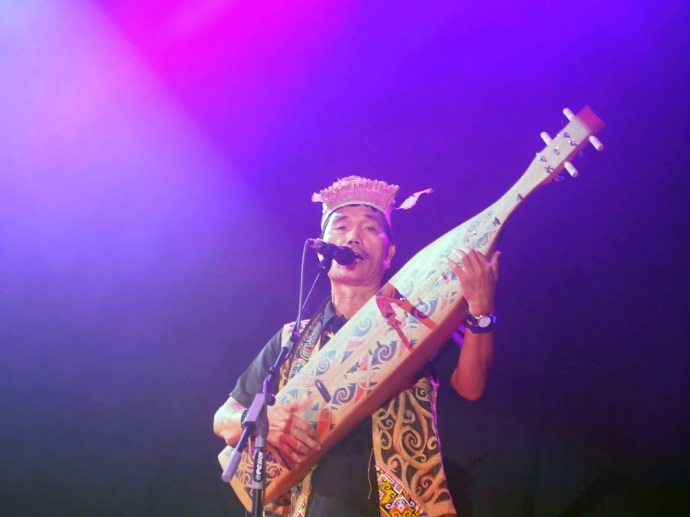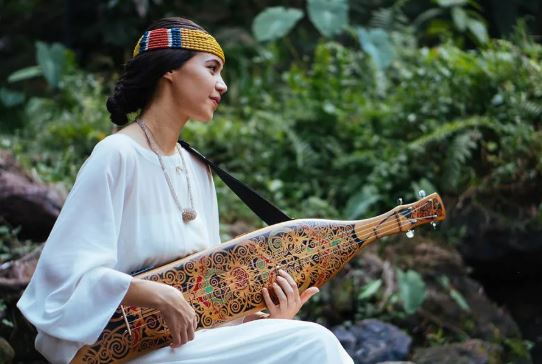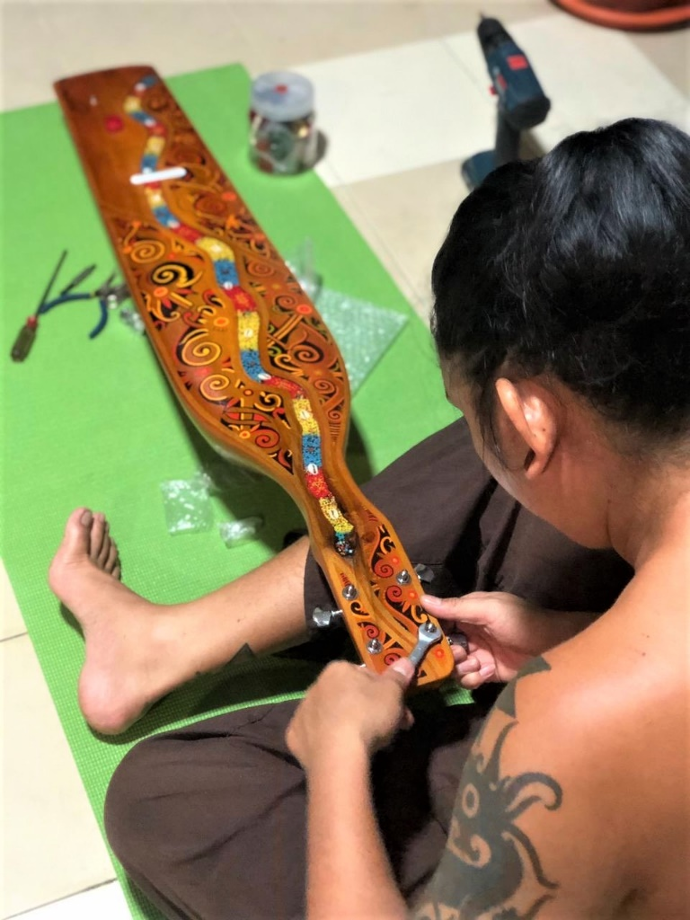Sape: The Sound of Sarawak
Have you ever wondered what the rainforest sounded like? What if you could put it to a melody? That is how the sape is lovingly described by the locals. Belonging in the lute family of musical instruments, it is indigenous to the Orang Ulu sub-tribes and synonymous to the sounds of Sarawak. Although there are approximately 27 tribal groups, the instrument remains the same across all of them.
It is made from a single block of wood with a hollowed back and is not unusual to reach over a metre in length. Although most sape now use 4 strings, it originally had 2 or 3 strings. Some now have 6 strings and added guitar pickups! The music is soothing and light, as it is said that the melodies are inspired by the dreams of the sape players.
The origin of the sape began with a man who was foraging for medicinal herbs to save his ailing wife. Falling asleep under a tree, he dreamt of his ancestors telling him that his wife was in the spirit world. They bade him to ferry her back to the living. Heeding their words, he found a block of wood and carved out the back into the shape of a boat. He fashioned strings out of leaves and roots and played a melody coupled with a ritualistic chant to lead her back home. His wife saved; the man later became a shaman.
Since then, the sape was used in ritualistic healing, evolving into entertainment for special events such as weddings and religious ceremonies. The respect for the sape was so serious, it was taboo for women to touch it for fear of cursing their kin. In modern times, it is an instrument for general entertainment which can even be played by women.
Although the art of the sape is dwindling, it is not going down without a fight. The Orang Ulu community have great respect for individuals dubbed ‘Cultural Guardians’, who are working to bring their traditional music and culture to the forefront of contemporary music.
Some prominent sape players of today are Matthew Ngau Jau, Alena Murang, and Ezra Tekola.
Matthew Ngau Jau is considered a legend among sape masters. He has toured the world performing, and is the only person in East Malaysia to be awarded the title of ‘Tokoh Orang Hidup’ (Malaysia’s Living Tradition) by the Department of National Heritage.
Alena Murang is among the first professional female sape performer. Her music video ‘Midang Midang’(a Kelabit folk song passed down from her grandaunt), is set in magical Bario. The video won the ‘Best Styling Award’ at the Buenos Aires Music Video Festival in 2020.
Sape luthiers are ever present online, selling their instruments to whoever is willing to appreciate its rich history and sweet tones. Some have blended modern touches and tradition to appeal to today’s audience. Ezra Tekola is one such luthier who is also a skilled sape player.
Want to experience more sape? No worries, we’ve got you covered:
1. Matthew Ngau Jau – Website (https://mathewngaujau.com/photos-videos)
2. Alena Murang – YouTube Channel (https://www.youtube.com/c/alenamurang)
3. Ezra Tekola – Facebook Page (https://www.facebook.com/tekolasampe)
4. Jerry Kamit – YouTube Channel (https://www.youtube.com/c/Borneoheadhunters/videos)
5. Ilu Leto – Facebook Page (https://www.facebook.com/iluleto)

(Matthew Ngau Jau - Image taken from matthewngaujau.com)

(Alena Murang - Image taken from TheCultureReviewMag.com)

(Ezra Tekola Stringing A Sape - Image taken from newsarawaktribune.com.my)
References:
1. Churchill, E. (2018, June 23). A passion for making Sape. Borneo Post Online. Retrieved December 1, 2021, from https://www.theborneopost.com/2018/06/24/a-passion-for-making-sape/.
2. News Desk. (2021, January 28). A new twist to the Sape. New Sarawak Tribune. Retrieved December 1, 2021, from https://www.newsarawaktribune.com.my/a-new- twist-to-the-sape/.
3. Tawie, P. (2021, August 18). The intricate art of making sape. New Sarawak Tribune. Retrieved December 1, 2021, from https://www.newsarawaktribune.com.my/the-intricate-art-of-making-sape/.